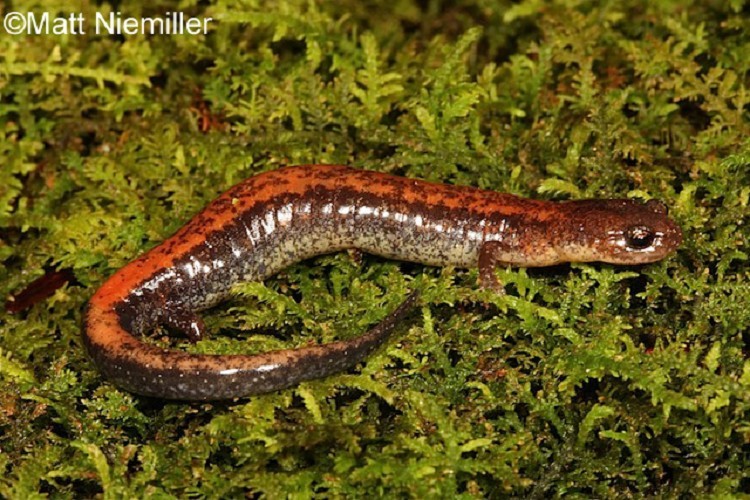Eastern Red-backed Salamander
Plethodon cinereusThe Eastern Backed salamander occurs in the northeast corner of Tennessee, while the identical Southern Red-backed Salamander occurs in the southeast corner of Tennessee.
Description: A small, slender salamander (2.5 to 4.0 inches in length) with two color morphs, striped and lead-backed. The striped morph has a red to orangish-red broad stripe from the head to the tail, while the body color is brown to dark brown. The lead-backed morph has no stripe on the back and is uniformly dark gray in color. Both the morphs have a black and white patterned belly producing a “salt-and-pepper” effect.
Similar Species: Distinguished from identical Southern Red-backed Salamander by range (and genetic analysis).
Habitat: Prefers cool, moist microhabitats in mature deciduous and conifer forests; typically under rocks, leaf litter, or rotten logs.
Diet: Ants, termites, beetles, flies, spiders, snails, mites, and other small invertebrates.
Breeding information: Adults breed on land between fall and spring. Females lay an average of 6-9 eggs in moist natural cavities such as leaf litter, soil burrows, or rotting logs. Females typically brood eggs for 6-8 weeks and sometimes males will remain as well. Juveniles often remain in the nest cavity with the mother 1-3 weeks after hatching.
Status in Tennessee: Local populations can be numerous; however some have been extirpated due to deforestation.
Fun Facts:
- The Eastern Red-backed Salamander plays an important role in the nutrient cycle of the eastern forest ecology.
Best places to see in Tennessee: Mature forests in the northeast corner of Tennessee.
